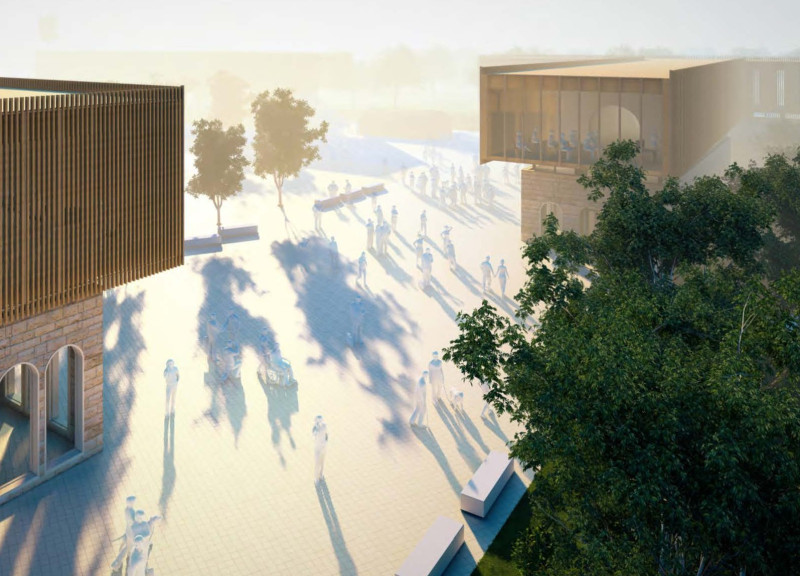5 key facts about this project
Functionality is at the core of the design, ensuring that the building effectively meets the needs of its users. Whether it serves as a residential space, a public facility, or a commercial hub, the architectural choices made throughout the project are deeply aligned with its operational requirements. The spatial organization has been thoughtfully executed, allowing for fluid movement and interaction among different areas. Important spaces are defined by their ability to adapt to varied activities, making the project versatile and user-friendly.
The layout encourages accessibility, with clear circulation patterns that guide users through the spaces. Natural light plays a vital role in the design, showcasing how strategic placement of windows and openings can enhance the ambiance. Large glass panels facilitate visual connections with the exterior environment, fostering a sense of openness while maintaining privacy where necessary. This relationship between the interior and exterior is a key aspect of the architectural approach, as it creates a harmonious dialogue with the landscape and contributes to overall well-being.
Material selection is another critical element of the project. The use of concrete, glass, wood, steel, and stone is carefully balanced to achieve both aesthetic appeal and structural integrity. Concrete provides the robustness necessary for longevity, while glass introduces transparency and lightness, essential in creating inviting spaces. Wood brings warmth and a natural element that softens the overall design, contributing to the comfort of occupants. Steel is used strategically for structural support, allowing for flexible designs that accommodate expansive open areas. Stone finishes add character and a sense of permanence, tying the contemporary design back to the natural environment.
Unique design approaches are evident throughout the project. One of the remarkable aspects is its alignment with sustainable architecture principles. By incorporating renewable energy sources such as solar panels and implementing rainwater harvesting systems, the project reduces its ecological footprint. Innovative features such as green roofs or living walls are not only visually appealing but serve a practical purpose by promoting biodiversity and enhancing insulation. These elements demonstrate a commitment to environmentally responsible design, reinforcing the project's relevance in today’s architectural landscape.
This project also pays homage to the local culture and climate, incorporating design elements that reflect regional styles and materials. This contextual sensitivity enriches the architectural expression, promoting a sense of place that resonates with its community. It addresses the unique challenges posed by the local environment while providing a platform for social interaction and engagement, reinforcing the idea that architecture should serve as a facilitator for community connectivity.
In summary, the architectural project is a thoughtful exploration of space and function, meticulously designed to support its users while respecting its environmental context. The balance of materials, the commitment to sustainability, and the focus on community interaction make this project a significant addition to its locale. For those interested in a deeper understanding of the intricacies involved in this architectural design, it is highly encouraged to explore the project presentation. Reviewing the architectural plans, architectural sections, and architectural designs will provide a more comprehensive view of the innovative ideas that define this work.


 Hannah Gabrielle Moorhouse
Hannah Gabrielle Moorhouse 




















